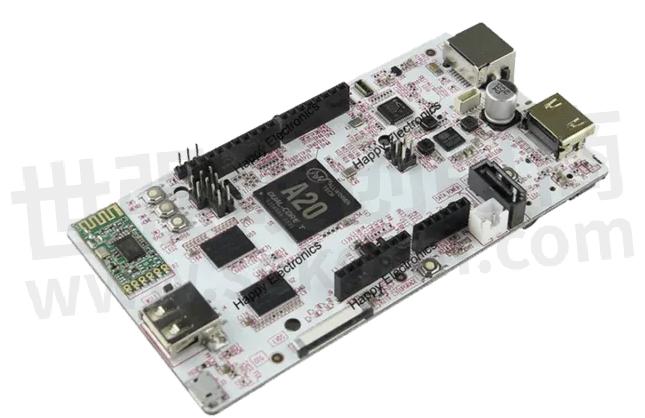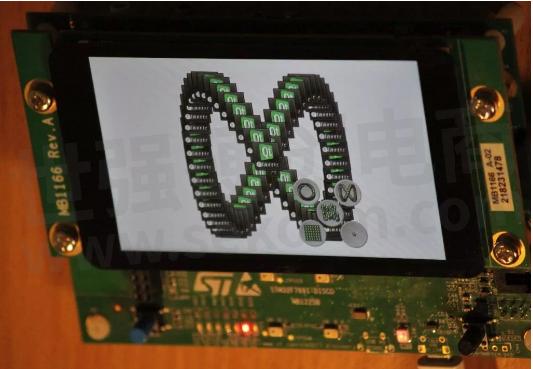Importance of Linux Embedded Wifi Module

There is a big contrast between embedded development and desktop app development. Embedded sensor interfaces and servers may not provide the same convenient access to the wired Ethernet, Bluetooth, and WiFi that conventional computers do. However, Linux can utilize the same source code across different applications. This ability of Linux also makes it the most ideal operating system for the integration and development of IoT and Linux. In this article, SKYLAB will introduce the importance of the Linux Embedded Wifi Module. We will also talk about what makes Linux a perfect OS for IoT development.

Linux Embedded WiFi Module and IoT
To understand the integration of IoT and Linux embedded WiFi module, we will consider an agrarian example. This example includes a system of 3 computers for IoT acquisition and control.
The system has a special design for monitoring water, temperature, and humidity for agrarian purposes. Take a look at the following information:
Desktop Computer
The first part of the system is the Linux-operated desktop computer. The desktop computer performs two functions. First, it controls the interval between the recordings for sensor input of farm field.
Secondly, it records and formats the information into reports for monitoring the performance and control of the irrigation system. It ensures that irrigation systems run only when required because of the predetermined interim of warm temperatures and low humidity.
The desktop computer has a 64-bit Intel/AMD processor, several 3.0 USB ports, and 16GB RAM. By the recent standards, you will consider it a classic desktop system.
Embedded Server
The second part is the embedded server. Also, this system consists of a 64-bit quad-core ARM processor that boots the Linux using a card (micro-SD). It has 2GB memory (eMMC), one HDMI port, 1GB Ethernet port, four 2.0 USB ports, BLE 5.2, and WiFi.
It connects to the wireless router through WiFi, communicating with a 20-miles away desktop connected to the wired internet connection. Also, the embedded Linux works to update applications and the OS via WiFi or micro-SD card.
This little embedded Linux computer server manages field sensor readings and sensor firmware updates. It also communicates with other office servers for managing, controlling, and reporting sensor data and field conditions.
Sensor Controller and Interface
The third part is a Linux system of a postage stamp size. This system comprises humidity and temperature sensors. It boots using the micro-SD card and has an eMMC 1GB memory. It is an ARM single-core processor device with a USB port, Bluetooth, and Linux embedded WiFi module.
Unlike other available operating systems in the market, Linux OS is completely scalable. It means that you can run it on sx390 IBM mainframes and small computers of a credit card size. These include Raspberry Pi and ASUS Tinkerboard.
Linux OS is compatible with an assortment of configurations and processor architectures. The embedded network, like in this example, comprises multiple core processors from ARM and Intel. It also includes single-core processors for data collection and sensor control.
Embedded Linux Benefits in the Internet of Things Development
Such configurations use several communication topologies and protocols. The embedded development differs a great deal from desktop app development.
Wired Ethernet, Bluetooth, and WiFi are essential components of desktops and laptops. However, these are not readily available when it comes to embedded development.
First Benefit
The primary benefit of Linux is that most common network protocols and topologies are available for support. It is possible to use your existing components throughout your network if you carefully choose the embedded hardware.
This way, you don’t need to worry about your processor architecture. It allows you to focus on constructing a Linux version that utilizes the communication and network protocol drivers you require. It also ensures unfailing versions for all computers.
Second Benefit
How would you test applications and drivers across more than two processor architectures? Common debugging tools and development is another great benefit of the Linux operating system.
A company that offers compilers, debuggers, code analyzers, editors, and development platforms can utilize existing tools for all Linux-supported architectures. Anything that you use on a desktop will also be available for an embedded server, controller, and sensor interface.
Using open-source platforms in a bad scenario means that you will have to compile tools. It will waste a lot of time in preparing for the platform development. It is the same case for analyzing code performance and debuggers. So, the software development cost is your time invested in building tools and downloading.
Using a Linux embedded WiFi module is beneficial in many ways. With Linux operating system, consolidated development is another great benefit.
As a developer, you can consolidate debugging and development on one desktop system or server in labs. It means that you can easily deploy the code and cross-target various processor architecture from a single machine.
Debugging and Development for Various Architectures
Using Linux-compatible cross-compilers for developing embedded apps for various platforms will save you a lot. Without Linux, the process will be extremely difficult and time-consuming.
First, you will have to develop the C++/C source code, and then compile it for debugging. Next, you will need to move your source code to another platform to repeat the same process. You require the same tools, debuggers, and compilers for cross-platform app development. The process is extremely straightforward. To edit and build kernels, applications, and drivers, you need the eclipse tool.
A developer installs tools and compilers for every single supported program and sets appropriate compiler flags within the environment of Eclipse to compile.
For debugging, we deploy programs to shared directories on targeted platforms. Developers set up GDB (GNU debugger) to link the target system before program execution. After the execution of the program, we can debug single-step C++ or C source code by setting up breakpoints.

Final Thoughts
In an Internet of Things environment, you can run multiple GDB applications. It allows you to use the same system in debugging and development of all architectures simultaneously.
Therefore, you can change communication protocols and applications and compile and debug all when running the GDB from a single system. Linux embedded WiFi module is a highly reliable solution when it comes to cost savings and efficiency
- +1 Like
- Add to Favorites
Recommend
- 9 Amazing Embedded WIFI Camera Module Hacks
- What WiFi4 WiFi5 WiFi6 Modules Does SKYLAB Have?
- What are the Advantages of WiFi 6 Modules over WiFi 5 Modules?
- What is a WiFi Module? What Are the Striking Features of a WiFi Module?
- What‘s WIFI Module and DVR Low Cost WIFI Module?
- The Wireless Wifi Module as Well as Functions and Notes When Choosing a Standard Wifi Module
- How AP Station 802.11bgn Wifi Module Works and its Frequency, Making a Wi-Fi Adapter for a TV Yourself
- WiFi Modules for Flat Panel and Commercial Display POS Machines
This document is provided by Sekorm Platform for VIP exclusive service. The copyright is owned by Sekorm. Without authorization, any medias, websites or individual are not allowed to reprint. When authorizing the reprint, the link of www.sekorm.com must be indicated.





























































































































































































































































































































































































































































































































































































































































































































































































































































































